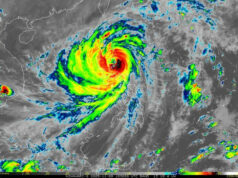COVID-19 economic toll could hit $253 billion without interventions
GOVERNMENT INTERVENTIONS and policy measures by Southeast Asian countries reduced potential economic losses of the coronavirus disease 2019 (COVID-19) by as much as 34%, according to a research by the Asian Development Bank (ADB).
In a policy brief released Friday, the ADB noted that policy measures rolled out by governments softened the impact of the virus on the global economy by around 30-40% through fiscal and monetary easing, higher health spending and direct support to cover losses in income.
In Southeast Asia, ADB data showed state interventions reduced potential economic losses by around 26-34% across the region to $119.6-$166.3 billion, which accounts for 3.4-4.7% of regional GDP.
Without policy measures, Southeast Asia’s economic losses could hit $163-$253 billion or 4.6-7.2% of GDP, according to the multilateral lender.
This means the stimulus efforts rolled out by the governments could raise output by $44-$87 billion or 1.2% to 2.5% of the region’s GDP.
The ADB projected the economic impact based on two scenarios where countries are under three- and six-month long containment with borders closed, travel restricted and lockdown measures imposed.
It said policy interventions can “significantly offset the impact” of COVID-19 by 30% under the short containment scenario and by 40% under the long term situation.
“However, with the current size of macroeconomic stimulus for some countries in the region still small relative to the impact of the COVID-19 outbreak, doubling the size of macroeconomic stabilization packages could help shorten the containment period,” the policy brief read.
Based on ADB’s updated policy database on May 4, the Philippines’ economic package rolled out reached $16.68 billion or 4.53% of GDP and accounts for 6.33% of the region’s total package.
To compare, the Philippines’ package was the fifth largest among the 10 Southeast Asian countries, only behind Vietnam’s $26.18 billion. Thailand had the largest at $82.534 billion, followed by Indonesia with $57.97 billion.
The ADB’s projections also showed Southeast Asian countries could see 158 million to as much as 242 million jobs lost under the two scenarios, which account for 11.6-18.4% of total employment in the region. This translates to labor income worth $25-$39 billion.
The ADB said aviation and tourism industries were the worst-hit sectors in the early part of the pandemic due to travel bans, while recreational activities, hospitality and retail trade have also shut down as most governments limited mass gatherings.
Transportation was also heavily cut down as people were ordered to stay home, agriculture was affected due to logistics issues, construction works halted and businesses in other sectors also took a hit, while many in the informal sector also lost their sources of income.
On trade alone, ADB data showed border closures, travel bans and lockdowns slashed the region’s trade output by around $229-$344 billion, equivalent to 6.5-9.7% of GDP under the two scenarios.
“In general, the trade channel is the mechanism by which the domestic impact of the pandemic spills over and is transmitted to other countries or regions. In this analysis, the impact on total trade is roughly 30% of the impact on global GDP. It can be inferred that the spillover effects from the COVID-19 pandemic are relatively small compared with the domestic impact,” it said. — B.M. Laforga



